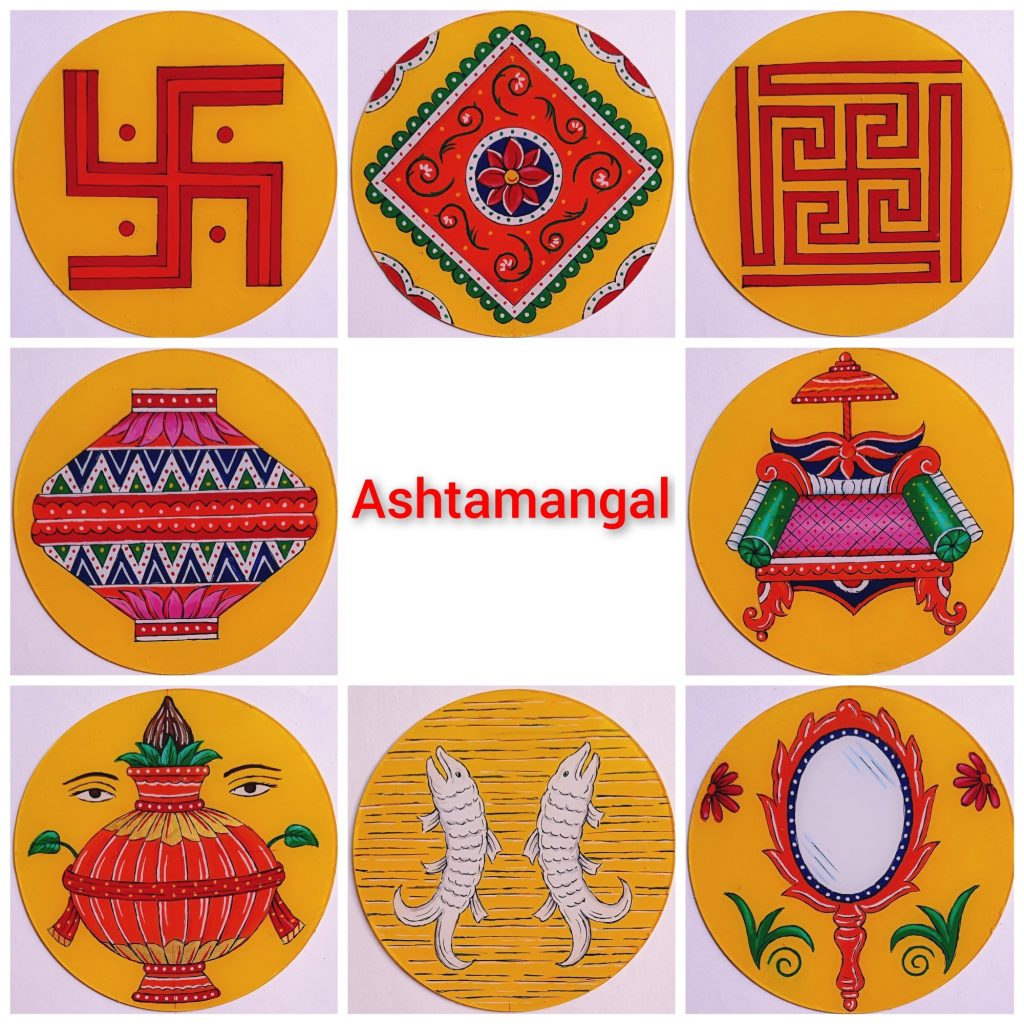Introduction to Jain Astmangal
Jain Astmangal, a collection of eight auspicious symbols, holds significant meaning in Jainism. These symbols are deeply rooted in Jain culture and spirituality. They represent various aspects of Jain teachings and philosophy, offering insights into the path of righteousness and spiritual liberation.
The Eight Auspicious Symbols
-
Swastika
The Swastika, a symbol of good fortune and well-being, is a prominent Jain symbol. It represents the four states of existence: heaven, human, animal, and hell. The Swastika reminds Jains of the cyclical nature of life and the importance of ethical living.
-
Shrivatsa
Shrivatsa is a sacred emblem resembling an endless knot. This symbol signifies the eternal nature of the soul and the interconnectedness of all life. It encourages followers to live in harmony with all beings.
-
Nandavarta
Nandavarta, a complex geometric design, symbolizes prosperity and spiritual growth. It is often associated with the concept of infinite knowledge and the pursuit of enlightenment.
-
Vardhamanaka
Vardhamanaka, also known as the “pot of plenty,” represents abundance and fulfillment. This symbol is a reminder of the bountiful blessings that come from living a virtuous life.
-
Bhadrasana
Bhadrasana, the throne of prosperity, signifies authority and divine power. It represents the spiritual authority of Tirthankaras and their role in guiding followers towards liberation.
-
Kalasha
Kalasha, a sacred pitcher, symbolizes purity and auspiciousness. It is often used in religious ceremonies to invoke blessings and purify the environment.
-
Minayugala
Minayugala, depicting a pair of fish, represents fertility and the harmonious flow of life. This symbol is a reminder of the interconnectedness of all beings and the importance of living in balance.
-
Darpan
Darpan, the mirror, symbolizes self-realization and introspection. It encourages followers to reflect on their actions and strive for spiritual purity and enlightenment.
Significance in Jain Rituals
Jain Astmangal symbols play a crucial role in various religious rituals and ceremonies. They are often depicted in temples, manuscripts, and religious artifacts. These symbols serve as reminders of Jain principles and inspire devotees to lead a life of non-violence, truth, and compassion.
Incorporating Astmangal in Daily Life
Understanding and incorporating Jain Astmangal into daily life can lead to spiritual growth and inner peace. These symbols encourage mindfulness, ethical behavior, and a deep connection with the divine. By embracing these teachings, individuals can navigate life’s challenges with grace and wisdom.
Conclusion
Jain Astmangal offers profound insights into Jain philosophy and spirituality. Each symbol carries unique meanings that inspire followers to live a life of virtue and compassion. By understanding and incorporating these symbols into daily practice, one can achieve spiritual growth and ultimate liberation.




